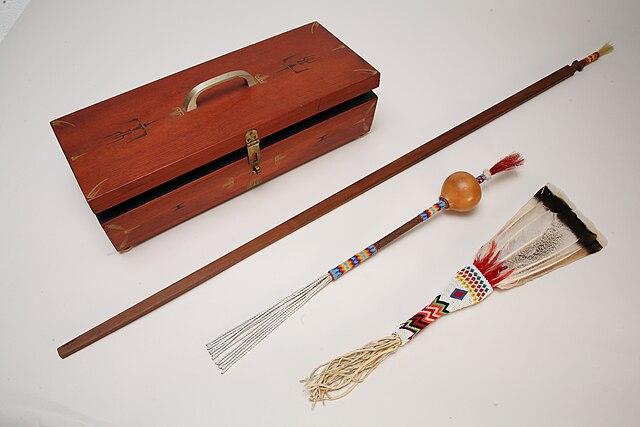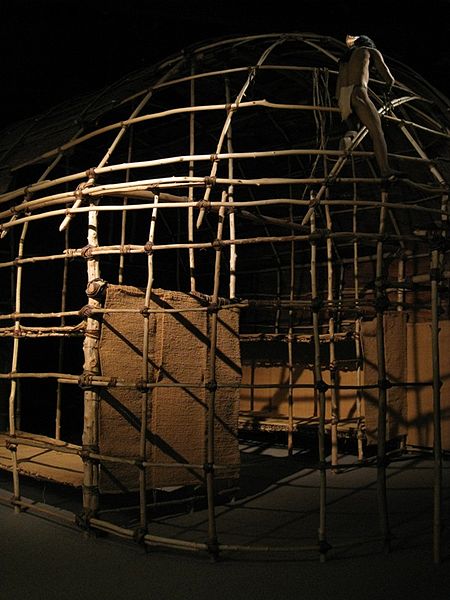The Native American Church (NAC), also known as Peyotism and Peyote Religion, is a syncretic Native American religion that teaches a combination of traditional Native American beliefs and elements of Christianity, especially pertaining to the Ten Commandments, with sacramental use of the entheogen peyote. The religion originated in the Oklahoma Territory (1890–1907) in the late nineteenth century, after peyote was introduced to the southern Great Plains from Mexico. Today it is the most widespread indigenous religion among Native Americans in the United States, Canada, and Mexico, with an estimated 300,000 adherents.
Peyote road
A peyote set such as this is used by the medicine man during the peyote ritual.
Peyote ceremony tipi
Native American religions
Native American religions are the spiritual practices of the Native Americans in the United States. Ceremonial ways can vary widely and are based on the differing histories and beliefs of individual nations, tribes and bands. Early European explorers describe individual Native American tribes and even small bands as each having their own religious practices. Theology may be monotheistic, polytheistic, henotheistic, animistic, shamanistic, pantheistic or any combination thereof, among others. Traditional beliefs are usually passed down in the forms of oral histories, stories, allegories, and principles.
Navajo men dressed as Tó Neinilii, Tobadzischini, Nayenezgani (1904)
Doctor's headdress, Pomo
This replica of a Six Nations (Haudenosaunee) longhouse represents where the traditional practices take place.
1891 Sioux Ghost Dance. The Ghost Dance movement influenced many Native American communities.







